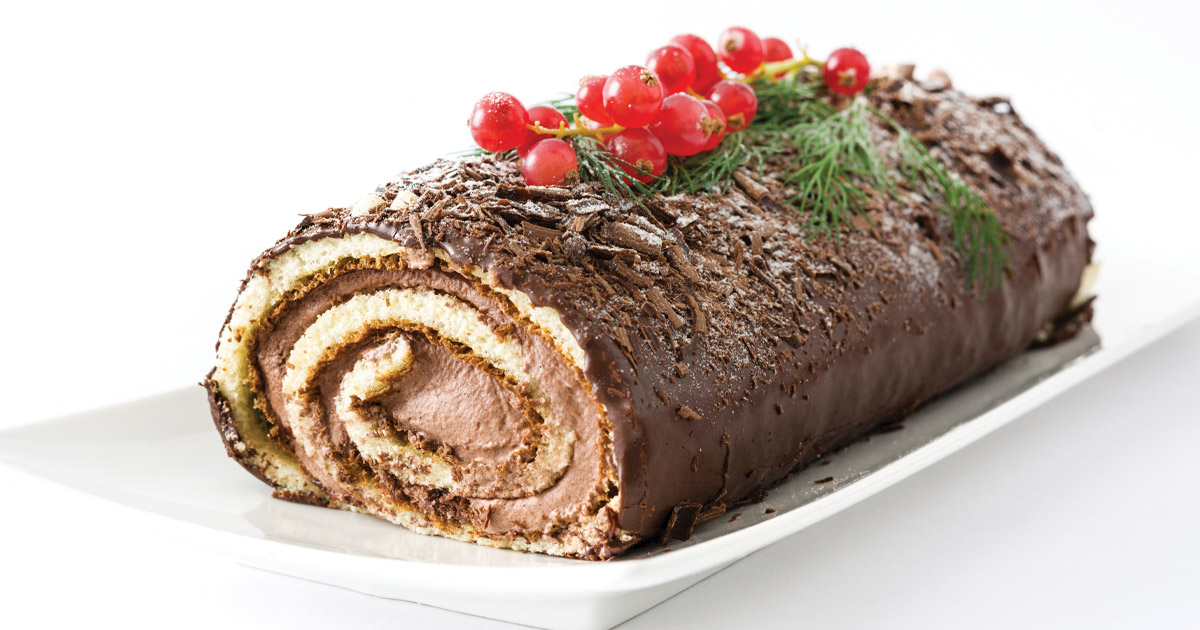BY LAUREN SEPHTON
Candy canes, figgy pudding, peppermint bark, and gingerbread men cookies are just a few of the timeless Christmas sweets that bring every adult back to their childhood memories. This year let’s gain some new inspiration by tracing back your family heritage and baking beyond the US border. Find below a little list of sweets from around the world that are enjoyed each year at Christmastime and can be found locally, or easily made at home.
Christmas Pudding
Christmas pudding, dating way back to medieval England, and especially popular during the Victorian Age, is a traditional holiday sweet served during Christmas dinner in the UK, as well as some parts of Ireland. Surprisingly, it was originally used as a way to preserve meat and did not make its debut as a tasty holiday sweet until the 1700s. Many of you may know Christmas pudding as plum pudding; however, the dessert doesn’t contain any trace of plums! During the Victorian Age, the term “plum” was used interchangeably with the term “raisins,” which are indeed found throughout this delectable sweet. Traditional Christmas pudding can be easily made at home with simple ingredients like apples, citrus zest, sultanas, mixed nuts and spices, as well as your classic cake baking ingredients.
Bibingka
Bibingka is traditionally served during breakfast, and also as a dessert, during Christmastime in the Philippines. A recipe that has been passed down for generations will typically instruct one to make this spongy rice cake with homegrown rice milled into flour. When Bibingka is made solely with rice flour, it becomes a delectable sweet for individuals with a gluten intolerance. However, other types of flours can be used a substitute with a slight alteration in flavor. This heavenly, slightly sweet dessert can be easily made at home, and is best served warm with coconut shavings.
Pavlova
Pavlova, originating in New Zealand, was actually named in honor of Russian ballerina Anna Pavlova. An old tale believes this recipe dates back to the 1920s, when Anna Pavlova visited New Zealand on her famous world tour. This meringue-based dessert traditionally has a crisp crust with a soft, marshmallow-like center, and is delectable by itself, or when served with whipped cream and fresh berries. The dessert is to be a perfectly light sweet, since it is most commonly served in New Zealand and Australia, where the Christmas Season is quite warm outside. Today, many audacious bakers have found creative designs and flavors to use as toppings for their pavlova, such as figs, poached pears, and kiwi.
Panettone
Italian Panettone bread is easily spotted throughout various supermarkets during the holiday season. It is a staple cake for all Christmas festivities in Italy that dates back to the Medieval Era, with the recipe originating in Milan. This traditionally citrus-flavored sweet bread is associated with the popular legend of a love story between a nobleman, Ughetto, and a common baker’s daughter, Adalgisa. After Ughetto’s family forbade him to marry into a lowly family, he went incognito to secretly take a job at Adalgisa’s father’s bakery to continue to see her. When playing around in the kitchen after hours, Ughetto added butter, sugar, candied peel, and raisins into Adalgisa’s father’s bread recipe to please her. Adalgisa’s father’s bakery became so popular from the sweet bread that Ughetto’s family gave him permission to marry her. While listening to the multitude of legends that are floating around Italy about the origin of the Panettone bread, take a warm seat by the fireplace while you enjoy this fluffy pastry with aromas of citrus and vanilla.
Bûche de Noël
Bûche de Noël is a remarkably popular holiday sweet among the French, and most commonly found in France and Quebec. Many may recognize it for its common name as a “yule log cake,” since the baking journey leads you to rolling it into a log-like shape. Traditionally, many bakers will decorate the rolled cake with frosting to mimic the rustic nature of bark, with the goal of the scrumptious cake looking like an attractive tree branch. Although the heirloom recipes for Bûche de Noël date back to the 19th century, its association with a “yule log” only became popular in the latter half of the 20th century.
Wash these sweets down with a warming drink as you share memories you will cherish for a lifetime with family and friends this holiday season.



















